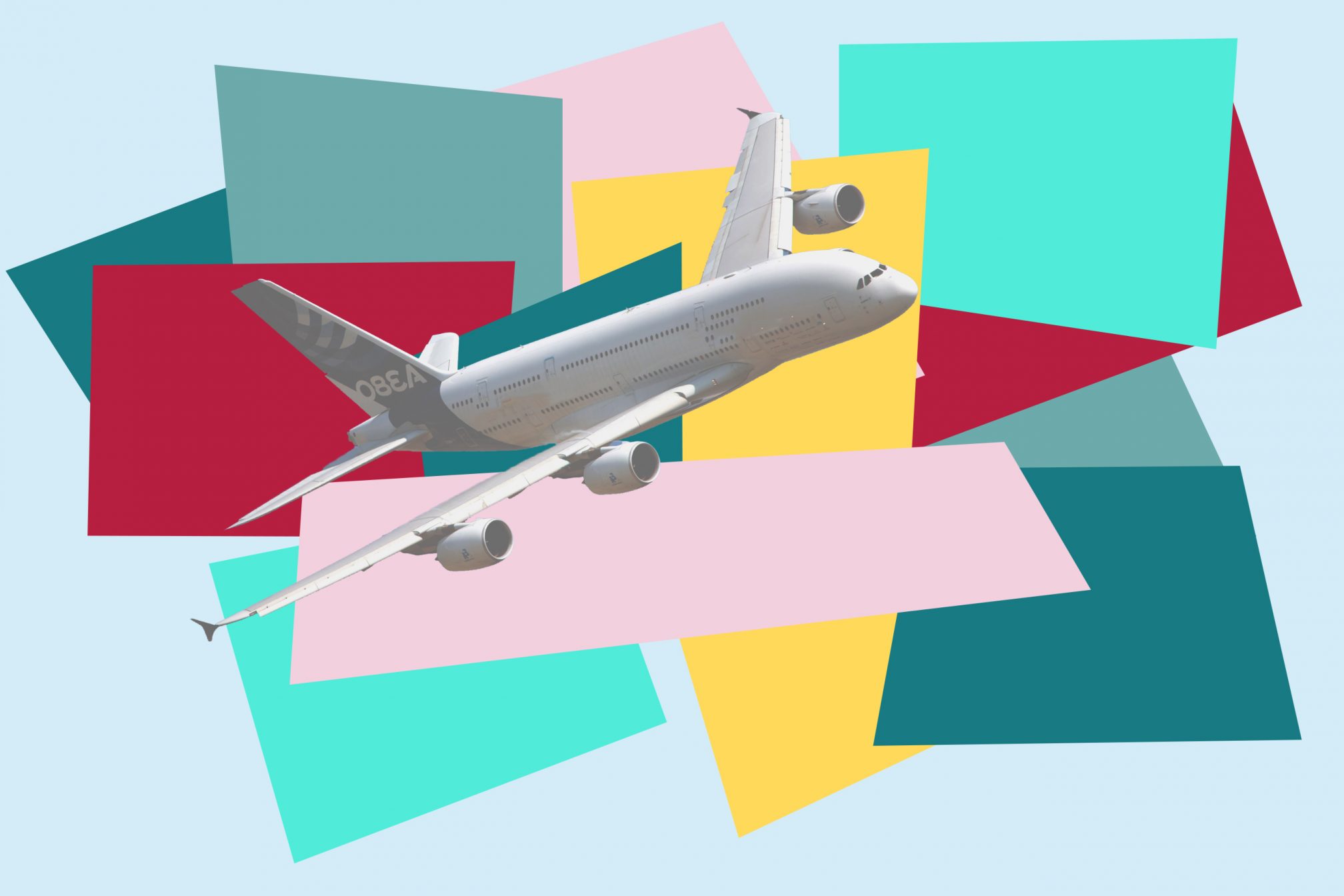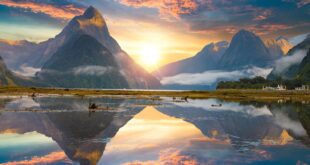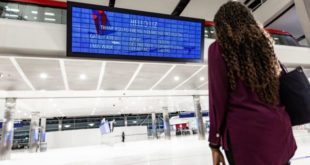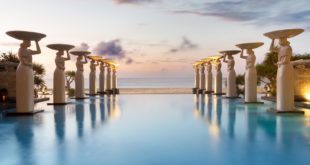- Words: Patrick Hinton|Illustrations: Vassilis Skandalis
- 16 May 2018
They state travel broadens the mind. Whether that’s the well known author Mark Twain philosophising in his very popular boo k The Innocents Abroad or teens justifying their boozy space year tour through South-East Asia as ‘self-improvement’, the principle of broadening one’s personal horizons by heading for the literal horizon has ended up being an accepted truism. Whether used earnestly or flippantly, the reasoning that diversifying your experiences and interactions can have a constructive result appears sound, and in a world opened up by flight and the web, this concept is permeating broader corners of culture. In electronic music, artists are working across nations in the pursuit of developing and recording boundary-breaking noises. They’re artists without borders, musicians sans frontières.
Xosar took part in the 2014 Red Bull Music Academy in Tokyo, and discovered the chance to work together with musicians hailing from all corners of the world in a new setting countless miles from house to be a “wonderful” experience. “It’s not simple to meet like-minded individuals, in any field, but when it takes place, I deeply treasure it,” states Xosar, adding that it nurtures “forces that are as huge as your creativity will go. It resembles being at Hogwarts School of Witchcraft and Wizardry.”
While at the Academy, Xosar got in the studio with a “spontaneous and random setup” of producers hailing from America, Holland, Portugal and the UK (Nightfeelings, Torus, MMMOOONNNOOO and Ossie respectively) and American rap artist and manufacturer Zebra Katz and made ‘?’, a fraught, adrenaline-charged track that marries an intense mix of growling bass, burning synth rises and spiky sound. The innovative process behind the gripping production involved the artists gathering together and sharing their varying viewpoints, resulting in the distinctly out-there result. “We would typically have a phase of creating a matrix of ideas and ideas, we would show each other YouTubes and other tunes we’ve made, speak about bigger motions in society that are on our mind,” explains Xosar. “Then we begin working on it, each individual walks around and aims to contribute an idea, and ultimately a more cohesive set of emotional and physical energies can be understood.”
Arlen Dilsizian and Derek Debru are the co-founders of Ugandan label Nyege Nyege Tapes, who developed Boutiq Studio in the Makindye district of Kampala in 2015, a community-focused recording area that is designed to be open to artists “whose work we feel aligns with the vision and objectives of the studio”. They extend invites to musicians coming from around the world, and inside the ripe creative conditions of the Boutiq Studio, musical experiments are producing remarkable outcomes. An early guest of the studio was Los Angeles hip hop pillar Riddlore, who worked with field recordings to make exactly what Dilsizian and Debru explained as a “brand-new Afro inspired bass sound” in the liner notes of the resultant 14-track album ‘Afromutations’.” He developed a sound that sounded completely fresh to us,” the label heads say, “both in the method it remodelled the field recordings, however likewise in relation to the already extraordinary body of work he had actually formerly made.” Another memorable session occurred when legendary synth player Mamman Sani remained for a month. Sani had never ever previously left his house nation of Niger to visit another African country prior to heading to Boutiq Studio, and while there he ended up being taken with the sounds of Ugandan music style electro acholi, investing hours every day improvising reinterpretations of the recordings put down by locals.
Leeds-based artist Jacob Maskell-Key initially went to Boutiq Studio aftering playing at Nyege Nyege Festival in 2016 alongside Blip Discs artists Tom Blip and O’Flynn, and in 2017 he returned and worked with the Nilotica Cultural Ensemble and Pete Jones on the Nihiloxica job. Their eponymous four-track EP weds synths and percussion into dark, stress fuelled noises. “Residing in a brand-new environment and settling into it makes a big distinction to the work. Being able to rehearse weekly has enabled us to check out various rhythms from all over Uganda and equate them into our own design. It’s been a beautiful exchange of ideas,” says Maskell-Key. The closing track on the ‘Nihiloxica’ EP is based upon an “Mbaru circumcision routine in the East of Uganda”. Entitled ‘Kadodi’, Maskell-Key discusses: “It’s a fast paced triplet rhythm that’s supposed commemorate the shift into manhood, however also shows the intensity and worry of the entire procedure.”
Jesse Hackett, an industrious musician who, among other jobs, is a live keyboardist for Gorillaz and singer and keyboardist for Owiny Sigoma Band, had been to Uganda two times prior to a Kenya-based shared pal put him touch with Dilsizian and Debru. Strategies were made for Hackett to invest 2 weeks at Boutiq Studio, however he wound up staying for 6, recording the psychedelic ‘Ennanga Vision’ album with electro acholi leader Otim Alpha and Albert Ssempeke, a previous royal musician for the king of Buganda. “Operating in various countries with musicians who have a really various set of skills, life experience and culture is constantly difficult and can be truly rewarding. I guess it has actually taught me to be able to change to aspects that are frequently really alien to me and try discover interesting and real methods the best ways to reinvent the creative process and product,” states Hackett.
He was taken out of any semblance of a convenience zone when investing a day shooting with regional action movie makers Wakaliwood, where he was “smothered in pigs intestinal tracts and eaten alive by zombie cannibals” for a video accompaniment to the track ‘Kampala Auto Chase’. “I guess the dark, moody, choppy, techno feel of the piece of music kind of matched this bizzare situation so … we just opted for it,” he later on said. Dilsizian and Debru select the shoot as one of their most unforgettable days considering that Boutiq Studio opened. Reflecting on the innovative instructions, they state “as the music establishes a crazy parallel visual world is also constructed around the music”.
Along with the music made cooperatively on location, the experience of global partnership can inspire artists and influence music they make afterwards. In 2014, acclaimed experimental techno producer Vessel was part of a task that saw him sign up with James Holden, Floating Points and Biosphere on an expedition to Morocco to deal with Gnawa musicians, a spiritual north African music that integrates poetry with standard rhythms. “It is subtle, sophisticated music and whilst ancient, it still feels crucial,” says Vessel, describing the rhythms played on hand percussion instrument the Qraqeb as “all at once lithe and angular, producing insistent momentum and dizzyingly high frequencies”, which the ceremonial vocals enhance like “supportive resonances”.
At initially, he struggled. “Trying to play with the musicians was exceptionally aggravating. They were doing exactly what I wished to be doing, playing music which was absolutely alive, fierce and physical. Complex whilst still easy, seductive but not uncomplicated. They could interact the sensation through their bodies and instruments in a way that electronic music tools struggle to help with. Initially I was rather despondent,” says the Bristolian manufacturer. But after working with the “patient, kind” Gnawa musicians across the week-long residency, he found the experience incredibly improving. “I found out so much from the musicians. Concepts that have actually ended up being so deeply deep-rooted in my technique and thinking that it is challenging to express them,” he states. “It crystallised specific ideas and sensations that had been silently forming for a long period of time. What I experienced there has become a bedrock for my own work, and is something I will always aim to reach for.”
Mala faced a comparable internal dispute while dealing with his 2012 album ‘ Mala In Cuba’, informing REALITY that upon first hearing the Cuban artists he thought:”I don’t understand if I can even deal with these men since they’re on a totally various level musically, and I feel so inferior “. But after understanding they had no understanding of how he produced his own noises, he chose combining these two unknown techniques could lead to something fresh. Cuban vocalist Danay Suarez who features on album track ‘Noches Sueños ‘applauds Mala’s”imaginative mind”and says she”deeply delighted in every noise”. However possibly undoubtedly, not all taking a trip artists have the most wholesome of objectives and some look for to make use of the areas they check out for individual gain without offering back
or being a part of collaborative projects. Previously this year, Nabihah Iqbal criticised Damon Albarn’s Africa Express project for enforcing a contract upon all participants mentioning they should waive rights to their music for a charge of ? 1. Dilsizian and Debru say there have been foreign arrivals to Boutiq Studio “who fly in with the goal of primarily taping local artists and sampling for their own productions”. For the most part, however, their experiences have actually been favorable. And when visiting artists approach their work fairly, the impact can be useful on a scale that extends beyond the confines of one recording studio.”Lots of going to artists have likewise contributed in assisting train and share knowledge with some of the more youthful producers we work with from Congo, Kenya, Tanzania and Uganda,”the Boutiq Studio bosses state, reflecting on the favorable expansion of musical motivation.” The sources of inspiration for artists [in Europe] are many and there is a network where artists remain in interaction with one another, follow each other’s work and get to carry out frequently. This community is still lacking here. “”A lot of fantastic things you hear in terms of underground dance music made on the continent [of Africa] is typically made versus a great deal of chances and with artists continuously in precarious situations and limited performance chances. Regional
artists are often really excited to discover and hear new music that they would not be normally have the opportunity we hear, “they add. “We have already seen that this exposure filters to the sonic locations many young manufacturers are exploring, the same method artists who come and visit us frequently entrust lots of novel concepts to check out in their work.”Arys Arenov, who produces under the alias Aresibo, was inspired to make club music by his experience conference global musicians, such as Xosar, at the 2014 RBMA in Tokyo. “I discovered a lot merely by seeing other individuals working, “he states,” the entire ambiance of the academy motivated me to start explore dance music”. He is now essential figure in Kazakhstan’s establishing electronic music scene, 4 hours from Kampala is a town called Iganga, the home of the Mugwisa International Xylophone Group, masters of the substantial Embaire xylophone which needs as much as nine gamers and is dug into a pit in the ground to strengthen the instrument ‘s depth and tonality. In 2016 they put out the’ Santuri’s Embaire Umeme’including electronic reworks of recordings by means of On The Corner Records in cooperation with East African underground network Santuri and Sam Jones’ non-profit culturaldevelopment organisationSoundThread. As part of the task, an outdoor efficiency location was created with regional villages to”assist people from outside the community join the experience”and supply”an industrial space withwhich to display performances [that] will have an advantageous impact on the town and on keeping the culture of the Embaire as a neighborhood resource “. The environment made for the ideal setting to record the sound of M.I.X.G, then spread it to brand-new climates.”Recordings need to have a visual with represents where the music is from. The sterilized environment [of studios] frequently robs recordings of their natural noise, and consequently authenticity,” says Sam Jones. All of these experiences are contributing to a shift in the international musical landscape: connections are being made, scenes and artists are progressing, ingenious sounds are being produced, music is spreading to brand-new areas.
Brian Durr, an American artist based in Tokyo who runs the label Diskotopia together with UK-born Matt Lyne and Japan native Am Rhein, believes that in the age of globalisation, international borders are becoming imperceptible when it concerns music. “I personally do not even believe people see music as ‘foreign ‘much any longer anyway as they can just gravitate to those styles, artists and vibes that are resonating with their own sense of self the most, “he states. The world is getting smaller sized- the swimming pool of next-level music we can gain access to is ever-growing. Patrick Hinton is Mixmag’s Digital Staff Author, follow him on Twitter
Source
http://Mixmag.net/feature/artists-are-travelling-the-world-to-create-next-level-sounds
 #Bizwhiznetwork.com Innovation ΛI |Technology News
#Bizwhiznetwork.com Innovation ΛI |Technology News




